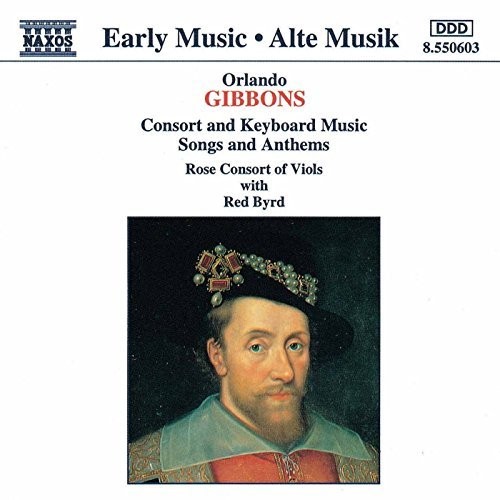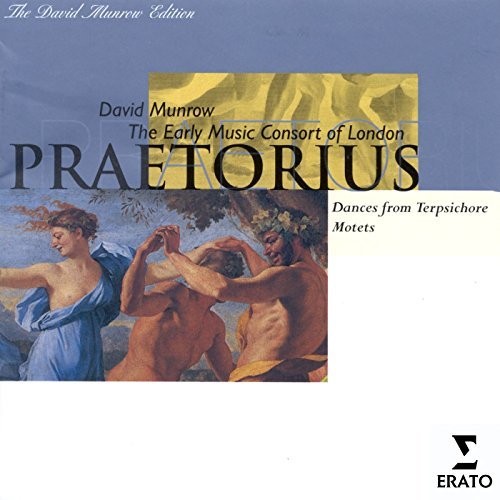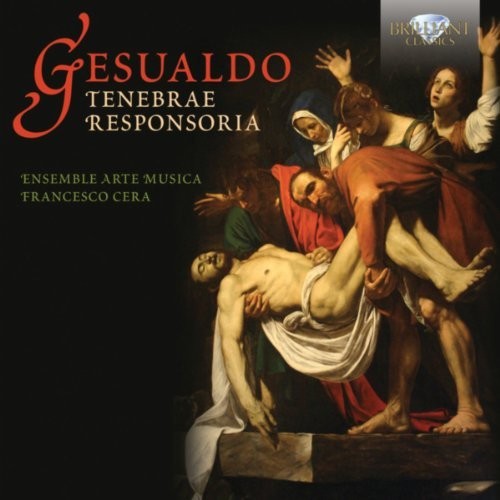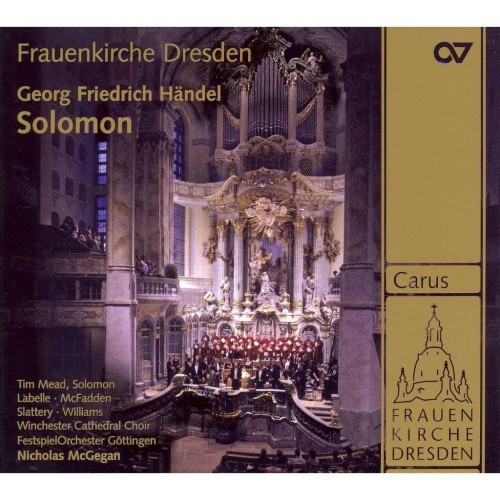|
View previous topic :: View next topic
|
|
| Author |
Message |
RoundTheBend
I miss the comfort in being sad

Location: Ground Control

|
- #161
- Posted: 11/13/2018 04:11
- Post subject:
|

The Anatomy Of Melancholy by Ensemble D...erto Festa
Era: Renaissance
Year: 1604
Form: Pavan
Score: 83.5
Thoughts: This was actually fantastic. 5 Viols... it created a very atmospheric sound that was beautiful and transforming. I much enjoyed it.
Info from wikipedia:
Lachrimæ or seaven teares figured in seaven passionate pavans, with divers other pavans, galliards and allemands, set forth for the lute, viols, or violons, in five parts is a collection of instrumental music composed by John Dowland. It was published by John Windet in London in 1604 when Dowland was employed as lutenist to Christian IV of Denmark. The publication was dedicated to Anne of Denmark.
The title page of Lachrimæ is adorned with a Latin epigram: "Aut Furit, aut Lachrimat, quem non Fortuna beavit" ("He whom Fortune has not blessed either rages or weeps"). Dowland points out in his dedication that there are different types of tears. “The teares which Musicke weeps” can be pleasant; “neither are teares shed always in sorrow but sometime in joy and gladnesse”.
|
|
|
|
|
Back to top
|
|
|
|
RoundTheBend
I miss the comfort in being sad

Location: Ground Control

|
- #162
- Posted: 11/13/2018 04:19
- Post subject:
|

Gibbons: Consort And Keyboard Music / S...hy Roberts
Era: Renaissance
Year: Early 1600
Form: Many different kinds
Score: 83.5
Thoughts: This also was a great experience. It was full of intriguing vocal, string and keyboard works. Lively and enjoyable. I have no idea if there's any depth to it though.
Info from Medieval.org:
Unfortunately, there are very few recordings of Gibbons' consort songs, but this recording contains several fairly well-done. Actually, it is the two verse anthems which are the most impressive pieces here, along with the consort pieces. The harpsichord/virginal pieces are less impressive in these interpretations.
Gibbons wrote some of the finest consort music of the era, and some of the finest chamber music in Western history.
From Gramophone: (Author: Guest)
Beautifully performed and finely recorded, this selection of Gibbons's music is especially attractive on account of the variety of its programme. At its richest it presents writing for voice and viols combined, five parts to each, or for viols alone, sometimes in six parts. In lightest, most transparent texture there is a charming piece for two viols. Three keyboard instruments are used for solos: virginals, harpsichord and organ. A soprano also sings solos to viol accompaniment. Moods and styles vary correspondingly. The Masks and Alman for virginals have a high-spirited, almost popular manner; the Fifth Fantasia includes some unusual chromaticism and harmonic developments that for a while almost anticipate Purcell. Among the songs, the four short poems of Joshua Sylvester are perhaps merely pleasant, but Faire is the rose is one of the most poignant of its period, its mood being well preserved in the Third Fantasia thoughtfully placed after it.
Like The silver swanne and Daintie the bird, Faire is the rose is given here as a solo, rather than as a part-song or madrigal. Tessa Bonner sings with unvibrant purity; but what will probably be found the most striking feature of all the singing here is the pronunciation. It is one of the distinguishing marks of this curiously named group, Red Byrd, that they sing such music with vowel-sounds modified to fit what I imagine are well-informed theories about the English in which it would originally have been sung. Thus the ''daintie fine bird'' tells ''oi sing and doy'', and the 'u' acquires a sort of umlaut in I weigh not fortune's frown, ''weigh'' and ''frown'' also having a measure of rusticity. Perhaps it is a good idea, but it does increase the desirability of printed texts in the booklet. The instrumental music is all finely played, the viols avoiding any imputation of belonging to the squeeze-and-scrape school, and Timothy Roberts's keyboard solos are particularly skilful, both in legato and fluent passagework.'
|
|
|
|
|
Back to top
|
|
RoundTheBend
I miss the comfort in being sad

Location: Ground Control

|
- #163
- Posted: 11/13/2018 04:59
- Post subject:
|

Praetorius: Dances From Terpsichore; Mo... Of London
Era: Renaissance
Year: 1612
Form: Dance?
Score: 83.5
Thoughts: Wow - three in a row. A full set of arrangements from percussion to strings to keys to vocals, etc. Lively and swell. I had a great time listening to these today.
Info from Wikipedia:
Terpsichore is a compendium of more than 300 instrumental dances published in 1612 by the German composer Michael Praetorius. The collection takes its name from the muse of dance.
In his introduction Praetorius takes credit for arranging the music rather than composing the tunes. The collection is based on French dance repertoire of the time, although scholars have identified some of the tunes as coming from elsewhere, for example England.[1]
An illustration of several musical instruments from Syntagma Musicum
The work was rediscovered in the twentieth century by the early music movement. Recordings include a selection performed by the Early Music Consort which was released in 1973.[2]
Info from Gramophone: (Author: Guest)
Praetorius’s 1612 collection has given rise to recordings of variegated plumage‚ with many different sorts and families of instruments – no doubt inspired‚ as Peter Holman correctly observes in the notes accompanying this disc‚ by the composer’s own instrumental treatise‚ the Syntagma musicum. Taking his cue from the preface to Terpsichore‚ however‚ Holman argues that what was intended is more likely to have been a string band‚ accompanied by lutes and theorbos. If that sounds a little monochrome compared to what went before‚ it isn’t: The Parley of Instruments put this notion into practice very engagingly indeed.
The recital allocates its material to three different ensembles: a four or fivevoice violin band comprising about a dozen players plus continuo; a reduced‚ onetoapart fourvoice violin band with or without continuo; and a consort of four lutes of different sizes. (The material for the latter is drawn from contemporary prints and from transcriptions of pieces in Terpsichore itself.) The music is arranged with similar or identical types of dance grouped together‚ just as the collection itself has it. Earlier recitals might have cut across forms to create suites‚ for example‚ but these sequences seem no less logical. Although this stringband genre (and much of the music) is essentially French in character and seems so in its delicacy and reliance upon subtle nuance‚ The Parley of Instruments sound none the less English for that – an uncanny combination‚ one might think‚ but it lends the recital a quirky charm that repays repeated listening. This internationalism of approach is enshrined in the collection itself‚ which includes a smattering of arrangements and dances of English‚ Italian and even extraEuropean origin. The colourful kaleidoscope of‚ say‚ David Munrow’s Terpsichore excerpts (Virgin Veritas‚ 9/96) is replaced here by something less exuberant but perhaps also more subtle (dare I use the word‚ ‘authentic’?). This is‚ in any case‚ a new look at a famous score‚ and for this reason as well as for the excellent performances‚ warmly welcomed.
|
|
|
|
|
Back to top
|
|
RoundTheBend
I miss the comfort in being sad

Location: Ground Control

|
- #164
- Posted: 11/13/2018 05:46
- Post subject:
|

Gesualdo: Tenebrae Responsoria by Ensem...cesco Cera
Era: Renaissance
Year: 1611
Form: madrigali spirituali
Score: 83.5
Thoughts: This was somehow fitting as my last record to wrap up early music. It actually had quite a bit of plainsong to come full circle on the journey. I, of course, by now have been plainsonged out, but did find the work to have some depth to it and from that stand point was interesting.
Info from Wikipedia:
Responsoria et alia ad Officium Hebdomadae Sanctae spectantia is a collection of music for Holy Week by Italian composer Carlo Gesualdo, published in 1611. It consists of three sets of nine short pieces, one set for each of Maundy Thursday, Good Friday and Holy Saturday, and a psalm and a hymn. The work was written for unaccompanied voices: two soprano parts, alto, two tenor parts, and bass.
The texts of the Responsories for Holy Week are related to Jesus's Passion and are sung in between the lessons at Tenebrae. Gesualdo's settings are stylistically madrigali spirituali - madrigals on sacred texts.[not verified in body] As in Gesualdo's later books of madrigals, he uses particularly sharp dissonance and shocking chromatic juxtapositions, especially in the parts highlighting text passages having to do with Christ's suffering, or the guilt of St. Peter in having betrayed Jesus.
|
|
|
|
|
Back to top
|
|
RoundTheBend
I miss the comfort in being sad

Location: Ground Control

|
|
|
Back to top
|
|
|
|
RoundTheBend
I miss the comfort in being sad

Location: Ground Control

|
- #166
- Posted: 11/14/2018 03:32
- Post subject:
|
Baroque Music Period

Thumbnail. Click to enlarge.

Thumbnail. Click to enlarge.
J. S. Bach: Die Kunst Der Fuge In Der F...Della Fuga
Era: Baroque
Year: 1750
Form: Fugue
Score: 84
Thoughts: This felt like my brain was getting cleaned and my ears messaged. Or maybe it was the other way around. I'm starting the Baroque backwards - starting with the last thing J. S. Bach wrote: Die Kunst der Fuge or the Art of the Fugue. This piece had no instrumentation assigned, and this interpretation/arrangement I chose because I felt the different voices I felt shared the frequencies better, allowing you to really experience the Fugue to the max. I gone dun liked it... a lot and stuff.
Info from wikipedia about Fugue:
Most fugues open with a short main theme, the subject,[5] which then sounds successively in each voice (after the first voice is finished stating the subject, a second voice repeats the subject at a different pitch, and other voices repeat in the same way); when each voice has entered, the exposition is complete. This is often followed by a connecting passage, or episode, developed from previously heard material; further "entries" of the subject then are heard in related keys. Episodes (if applicable) and entries are usually alternated until the "final entry" of the subject, by which point the music has returned to the opening key, or tonic, which is often followed by closing material, the coda.[6][7] In this sense, a fugue is a style of composition, rather than a fixed structure.
Info about this piece from wikipedia: https://en.wikipedia.org/wiki/The_Art_of_Fugue
The Art of Fugue (or The Art of the Fugue; German: Die Kunst der Fuge), BWV 1080, is an incomplete musical work of unspecified instrumentation by Johann Sebastian Bach (1685–1750). Written in the last decade of his life, The Art of Fugue is the culmination of Bach's experimentation with monothematic instrumental works.
This work consists of 14 fugues and 4 canons in D minor, each using some variation of a single principal subject, and generally ordered to increase in complexity. "The governing idea of the work", as put by Bach specialist Christoph Wolff, "was an exploration in depth of the contrapuntal possibilities inherent in a single musical subject."[1] The word "contrapunctus" is often used for each fugue.
Info from the publisher, Naxos:
Hans-Eberhard Dentler, a graduate medical physician but also an outstanding cellist and pupil of the renowned Pierre Fournier and founder of a Bach Society in Italy, has occupied himself with this opus over the course of many years. Because he finally wanted to realize Bach's score in a manner true to its spirit and sound, he found a concept for his ensemble ''L'Arte della Fuga'' that unifies its more profound scholarly background with practical musical and artistic aspects. The puzzle of this work can only be solved when one grasps its rootedness in the sphere of Pythagorean musical thinking. Dentler's edition, scored for violin, viola, violoncello, double bass and bassoon in an utterly well thought-out arrangement of movements will soon be published by Schott Verlag in Mainz.
Last edited by RoundTheBend on 09/14/2020 05:39; edited 5 times in total
|
|
|
|
|
Back to top
|
|
AfterHours

Gender: Male
Location: originally from scaruffi.com ;-)
|
- #167
- Posted: 11/15/2018 00:14
- Post subject:
|
I know I've alluded to this once before but this is probably the most impressive log/diary in all of BEA. Quite an undertaking, not to mention the research hours, time, commitment, knowledge and experience required - WOW.
It seems likely Art of Fugue was intended for organ. I don't remember who made the best case for this but I think it might have been Helmut Walcha. Whoever it was left virtually no doubt and I will post it if I find it.
_________________
Best Classical
Best Films
Best Paintings
|
|
|
|
|
Back to top
|
|
RoundTheBend
I miss the comfort in being sad

Location: Ground Control

|
- #168
- Posted: 11/15/2018 03:24
- Post subject:
|
| AfterHours wrote: | I know I've alluded to this once before but this is probably the most impressive log/diary in all of BEA. Quite an undertaking, not to mention the research hours, time, commitment, knowledge and experience required - WOW.
It seems likely Art of Fugue was intended for organ. I don't remember who made the best case for this but I think it might have been Helmut Walcha. Whoever it was left virtually no doubt and I will post it if I find it. |
Well thank you. It has been quite a bit of work to not only catalog here on BEA all these albums, but then also to see if I could find a good recording for each work, mostly by sampling the most famous parts across 4 or so different recordings. I probably got it 50% correct and need to work on fixing about 25% of it... might be as high as 75%... with the caveat of it's on Spotify, which a lot of great recordings aren't.
And really I'm just using online resources, I'm not an expert at all. "An Idiot's" experience... kind of based off that Ricky Gervais show idiot abroad because I'll likely be making a lot of first experiences. I do have years of unconscious competence due to my families ties - my brother studied with Harold Farberman and overall my family has just loved classical music. Having already easily 5,000 hours of listening to classical music from a less deliberate fashion random chances to appreciate it live and having shared a room with my brother growing up... let's just say falling asleep to anything from Mozart to Mahler was a nightly occurrence. I also played an upright in high school for both the orchestra and jazz band... but to be honest I enjoyed playing jazz more.
You are likely correct in regards to Die Kunst der Fuge, as it was an unfinished work and that is very fitting considering. I also read that he initially was writing this piece using a harpsichord, but that doesn't mean it wasn't intended to be on an organ. I really did like the arrangement/interpretation this gave though, as like I said it gave the frequencies/registers of the instruments room to breathe, it also allowed a bit of synergy between the players.
|
|
|
|
|
Back to top
|
|
RoundTheBend
I miss the comfort in being sad

Location: Ground Control

|
- #169
- Posted: 11/15/2018 04:35
- Post subject:
|

Handel: Water Music; Music For The Roya...es Nations
Era: Baroque
Year: 1749 for Music For The Royal Fireworks and 1717 for Water Music
Form: Dance music in forms of Minuets, Bourrées and Hornpipes with Sicilian movement
Score: 86
Thoughts: The second Suite of Water Music is easily top 10 material of the Baroque. This performance is fantastic because the instrumentation seems to ring true to the time period, giving proper mix to the harpsichord and lute which many modern recordings ignore. Jordi Savall I've come to learn is quite the expert in early music and his interpretation is fantastic. I also learned (see below) that the second suite actually is the 2nd and 3rd suite combined, something I didn't know before but I guess when it got published it got a bit of a "remix" if you will. I later listened to Music for the Royal Fireworks- up until this point I never listened to both back to back and realized they actually were a lot alike except decades apart.
Info on Water Music from Wikipedia (excerpts):
The Water Music is a collection of orchestral movements, often published as three suites, composed by George Frideric Handel. It premiered on 17 July 1717, in response to King George I's request for a concert on the River Thames.
The Water Music is scored for a relatively large orchestra, making it suitable for outdoor performance.
The first performance of the Water Music suites is recorded in The Daily Courant, the first British daily newspaper. At about 8 p.m. on Wednesday, 17 July 1717, King George I and several aristocrats boarded a royal barge at Whitehall Palace, for an excursion up the Thames toward Chelsea. The rising tide propelled the barge upstream without rowing. Another barge, provided by the City of London, contained about 50 musicians who performed Handel's music. Many other Londoners also took to the river to hear the concert. According to The Courant, "the whole River in a manner was covered" with boats and barges. On arriving at Chelsea, the king left his barge, then returned to it at about 11 p.m. for the return trip. The king was so pleased with the Water Music that he ordered it to be repeated at least three times, both on the trip upstream to Chelsea and on the return, until he landed again at Whitehall.
There is evidence for the different arrangement found in Chrysander's Gesellschaft edition of Handel's works (in volume 47, published in 1886), where the movements from the "suites" in D and G were mingled and published as one work with HWV 348.
Info from Wikipedia on Fireworks (excerpts):
The Music for the Royal Fireworks (HWV 351) is a suite for wind instruments composed by George Frideric Handel in 1749 under contract of George II of Great Britain for the fireworks in London's Green Park on 27 April 1749. It was to celebrate the end of the War of the Austrian Succession and the signing of the Treaty of Aix-la-Chapelle (Aachen) in 1748.
On 21 April 1749 an audience, claimed to be over twelve thousand people, each paying two shillings and six pence (half a crown) rushed to get there, causing a three-hour traffic jam of carriages on London Bridge, the only vehicular route to the area south of the river.
|
|
|
|
|
Back to top
|
|
RoundTheBend
I miss the comfort in being sad

Location: Ground Control

|
- #170
- Posted: 11/21/2018 05:52
- Post subject:
|

Handel: Solomon by Nicholas McGegan / F... Gottingen
Era: Baroque
Year: 1748
Form: Oratorio
Score: 82
Thoughts:
Unbelievable amount of work put into this (2 hours and 36 minutes). However it feels at times as a litany of recitatives (nothing terribly musical, rather vocals with simple accompaniment). I realize that's more or less what you get with an Oratorio, but I'm less interested in lyrical works like this. Solomon is a massive part of the old testament text, so the subject matter isn't without depth. Cut the baby in half! Overall I was impressed, but I feel the Messiah is a greater work. Although the review below disagrees, I actually like this recording. Not only is it a solid performance, but I actually felt the live aspect of and the venue chosen lent to a better experience. The Arrival of the Queen of Sheba did kind of stick out like a sore thumb... I'm curious as to the purpose of that to break from the feel of the rest of the oratorio. Music, spread thy voice around is another highlight musically.
Info from Wikipedia:
Solomon, HWV 67, is an English oratorio by George Frideric Handel. The anonymous libretto - currently thought to have been penned by the English Jewish poet/playwright Moses Mendes (d.1758)[1] - is based on the biblical stories of wise king Solomon from the First Book of Kings and the Second Book of Chronicles with additional material from Antiquities of the Jews by ancient historian Flavius Josephus. The music was composed between 5 May and 13 June, 1748 and the first performance took place on 17 March, 1749 with Caterina Galli in the title role at the Covent Garden Theatre in London where it had two further performances. Handel revived the work in 1759.[2]
The oratorio contains a short and lively instrumental passage for two oboes and strings in Act Three, known as "The Arrival of the Queen of Sheba", which has become famous outside the context of the complete work and was featured at the 2012 London Olympics opening ceremony as James Bond (Daniel Craig) goes to meet the Queen at Buckingham Palace.
AllMusic Review by Stephen Eddins:
Solomon, one of Handel's most compelling oratorios, has been well served on disc, and Nicholas McGegan's version on Carus makes a strong addition. The recording was made at a live performance at the Frauenkirche, Dresden, and that circumstance is one of the few drawbacks of the release. The sound is fine for a live performance, but there is some sense of distance between the listener and the performers, much like there would be in, well, a live performance. The sound of the singers and instrumentalists doesn't have quite the fullness and presence and depth that some recordings create. Again, it's not a major distraction, but it makes it hard to put more effectively engineered versions out of mind, particularly conductor Daniel Reuss' outstanding version on Harmonia Mundi.
McGegan's interpretation is solid, if somewhat conventional, without quite igniting the spark that can make the oratorio radiate joy and warmth and sensuality. As an example, the chorus that closes the first section, describing Solomon's marriage, "May no rash intruder disturb their soft hours," can seethe with an erotic charge, but here sounds somewhat polite and perfunctory. All the performers are first rate; the Winchester Cathedral Choir and FestspielOrchester sing and play with vigor and a high level of energy. The soloists are in strong voice. Countertenor Tim Mead is a convincing Solomon, singing with warmth and full, commanding tone. Sopranos Dominique Labelle as Solomon's Queen and the First Harlot, and Claron McFadden as the Queen of Sheba and the Second Harlot bring voices of shining purity to their roles. Labelle is particularly moving as the First Harlot, and her passionate entreaty to Solomon and her ecstatic response to his judgment are among the highlights of the album. The men, tenor Michael Slattery and bass Roderick Williams as the Levite, also deliver strong supporting performances. McGegan's Solomon may not rise to the head of the pack in its intensity and heat, but it's a solid and elegant performance.
http://www.musicweb-international.com/c..._83242.htm
|
|
|
|
|
Back to top
|
|
|
|
|
  |
All times are GMT
|
| Page 17 of 108 |
|
|
|
You cannot post new topics in this forum
You cannot reply to topics in this forum
You cannot edit your posts in this forum
You cannot delete your posts in this forum
You cannot vote in polls in this forum
|
|
|